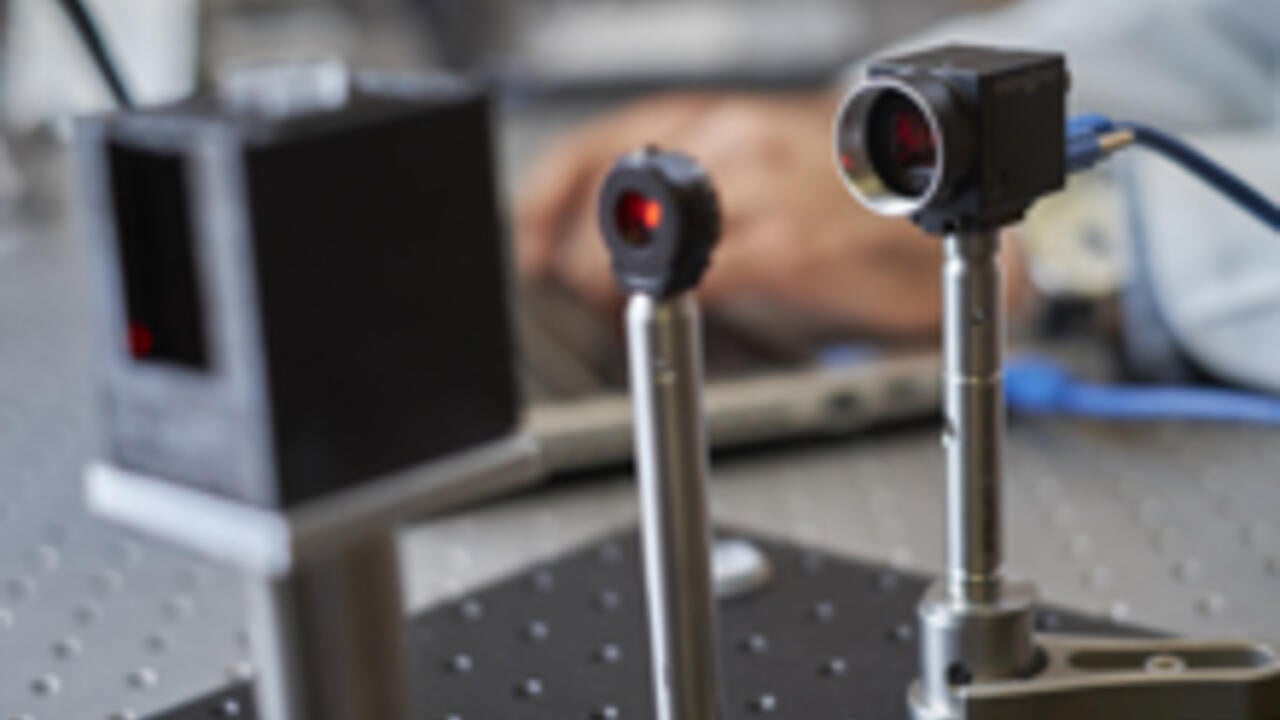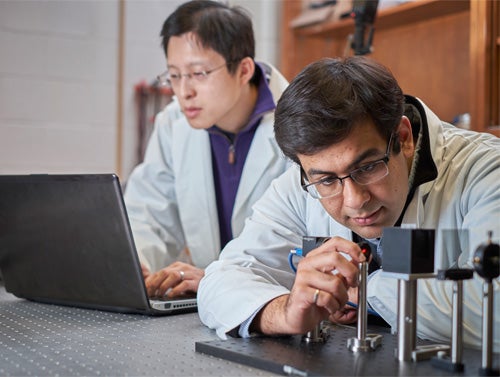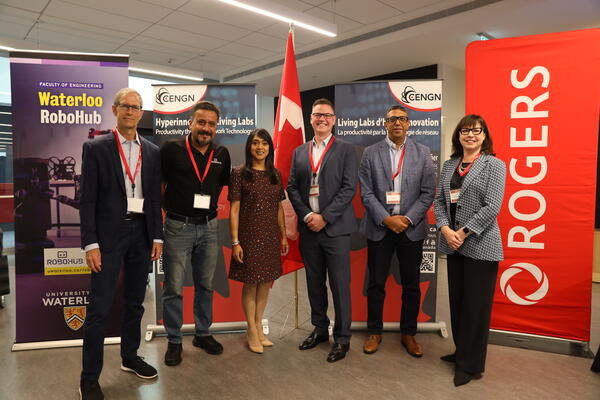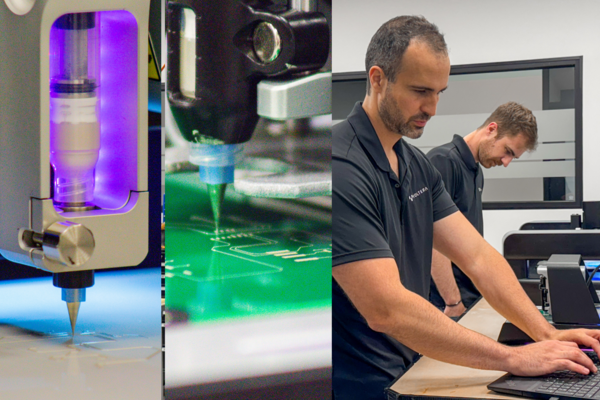
Waterloo device could take the pain out of diabetics’ blood tests
Innovative hand-held device - small enough for children - takes pictures of the eye to determine blood glucose concentrations

Innovative hand-held device - small enough for children - takes pictures of the eye to determine blood glucose concentrations
By Carol Truemner Faculty of EngineeringA Waterloo Engineering student is developing a device that he hopes will let people with Type 1 diabetes test their blood sugar levels without the painful prick of a needle.
Shahid Haider was inspired to create the device - which takes pictures of the eye to determine blood glucose concentrations - after watching his younger brother struggle with the daily monitoring of his levels.

Alex Wong and Shahid Haider (M.A.Sc Candidate).
“I’ve seen first-hand my brother’s struggles in trying to determine his blood sugar levels; what he can eat, what he can’t eat, and how much insulin he should take,” said Shahid Haider, a graduate student in Waterloo’s Department of Systems Design Engineering. “That sparked my interest in trying to find a non-invasive and painless solution for checking blood glucose levels.”
Haider is working to make his technology, which is small enough to fit into a child’s hands, even smaller and the readings more precise. He hopes the technology will one day be incorporated into prescription eye glasses for continual monitoring that doesn’t interfere with people’s daily activities.
Diabetes is a chronic disease in which the body either cannot produce insulin or the insulin, produced by the pancreas, cannot be used properly. In Canada, there are 3.3 million people living with diabetes and if not properly managed it can result in eye, kidney and heart damage as well as death.
Haider is hoping to improve the quality of life for people, especially children, living with diabetes and to help them manage their illness more easily so they don’t suffer serious complications. The age of onset for diabetes is often adolescence, a stage in life that makes the daily, intensive monitoring of blood glucose concentrations especially difficult.
“We’ve done several proof of concept experiments to show we can determine the difference in blood glucose levels so people can know whether they’re at a typical glucose level or above or below it,” said Haider, a member of Waterloo Engineering’s Vision and Image Processing Research Group
His life-enhancing research was recognized with the international 2014 Norman Edmund Inspiration Award. The honour acknowledges exceptional research that inspires others, in particular children, to pursue careers in science and technology by developing new devices to advance medical sciences and cure any illnesses that they may face throughout their lives.
Haider is committed to continuing his research at the University of Waterloo where he will pursue his doctoral studies. While formal testing on humans is still a ways off, Haider won’t have far to look for volunteers. Besides his brother, two of Haider’s friends, both University of Waterloo students, are diabetics and willing participants.
“They are both fully on board,” said Haider.

Read more
Here are the people and events behind some of this year’s most compelling Waterloo stories

Read more
Living Lab initiative will help Canadian companies test and validate products and services at Waterloo’s RoboHub

Read more
Voltera prints electronics making prototyping faster and more affordable — accelerating research to market-ready solutions
Read
Engineering stories
Visit
Waterloo Engineering home
Contact
Waterloo Engineering
The University of Waterloo acknowledges that much of our work takes place on the traditional territory of the Neutral, Anishinaabeg, and Haudenosaunee peoples. Our main campus is situated on the Haldimand Tract, the land granted to the Six Nations that includes six miles on each side of the Grand River. Our active work toward reconciliation takes place across our campuses through research, learning, teaching, and community building, and is co-ordinated within the Office of Indigenous Relations.